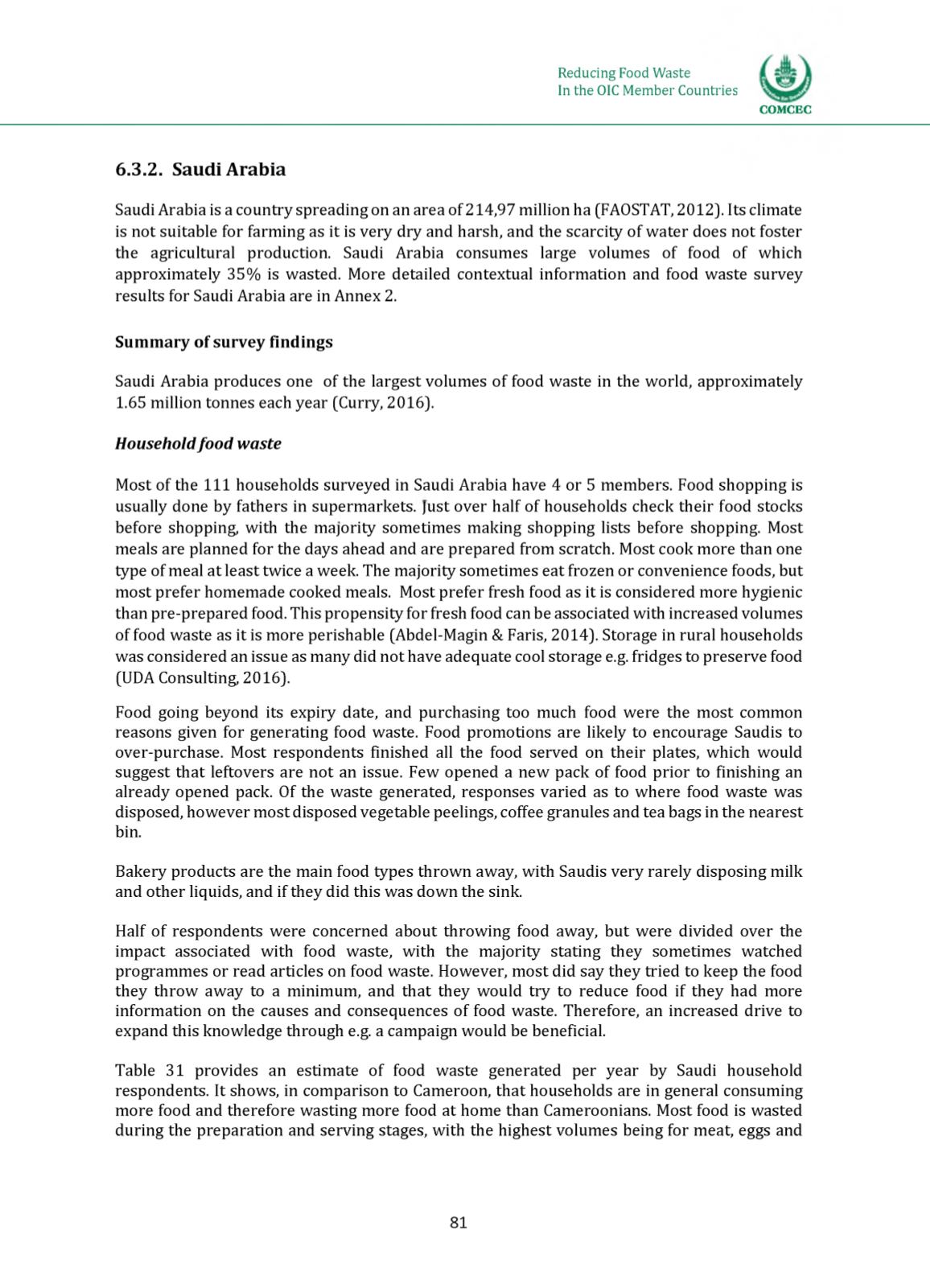

COMCEC
Reducing Food Waste
In the OIC Member Countries
6.3.2. S a u d i A r a b ia
Saudi Arabia is a country spreading on an area of 214,97 million ha (FAOSTAT, 2012). Its climate
is not suitable for farming as it is very dry and harsh, and the scarcity of water does not foster
the agricultural production. Saudi Arabia consumes large volumes of food of which
approximately 35% is wasted. More detailed contextual information and food waste survey
results for Saudi Arabia are in Annex 2.
Summary of survey findings
Saudi Arabia produces one of the largest volumes of food waste in the world, approximately
1.65 million tonnes each year (Curry, 2016).
Householdfood waste
Most of the 111 households surveyed in Saudi Arabia have 4 or 5 members. Food shopping is
usually done by fathers in supermarkets. Just over half of households check their food stocks
before shopping, with the majority sometimes making shopping lists before shopping. Most
meals are planned for the days ahead and are prepared from scratch. Most cook more than one
type of meal at least twice a week. The majority sometimes eat frozen or convenience foods, but
most prefer homemade cooked meals. Most prefer fresh food as it is considered more hygienic
than pre-prepared food. This propensity for fresh food can be associated with increased volumes
of food waste as it is more perishable (Abdel-Magin & Faris, 2014). Storage in rural households
was considered an issue as many did not have adequate cool storage e.g. fridges to preserve food
(UDA Consulting, 2016).
Food going beyond its expiry date, and purchasing too much food were the most common
reasons given for generating food waste. Food promotions are likely to encourage Saudis to
over-purchase. Most respondents finished all the food served on their plates, which would
suggest that leftovers are not an issue. Few opened a new pack of food prior to finishing an
already opened pack. Of the waste generated, responses varied as to where food waste was
disposed, however most disposed vegetable peelings, coffee granules and tea bags in the nearest
bin.
Bakery products are the main food types thrown away, with Saudis very rarely disposing milk
and other liquids, and if they did this was down the sink.
Half of respondents were concerned about throwing food away, but were divided over the
impact associated with food waste, with the majority stating they sometimes watched
programmes or read articles on food waste. However, most did say they tried to keep the food
they throw away to a minimum, and that they would try to reduce food if they had more
information on the causes and consequences of food waste. Therefore, an increased drive to
expand this knowledge through e.g. a campaign would be beneficial.
Table 31 provides an estimate of food waste generated per year by Saudi household
respondents. It shows, in comparison to Cameroon, that households are in general consuming
more food and therefore wasting more food at home than Cameroonians. Most food is wasted
during the preparation and serving stages, with the highest volumes being for meat, eggs and
81
















